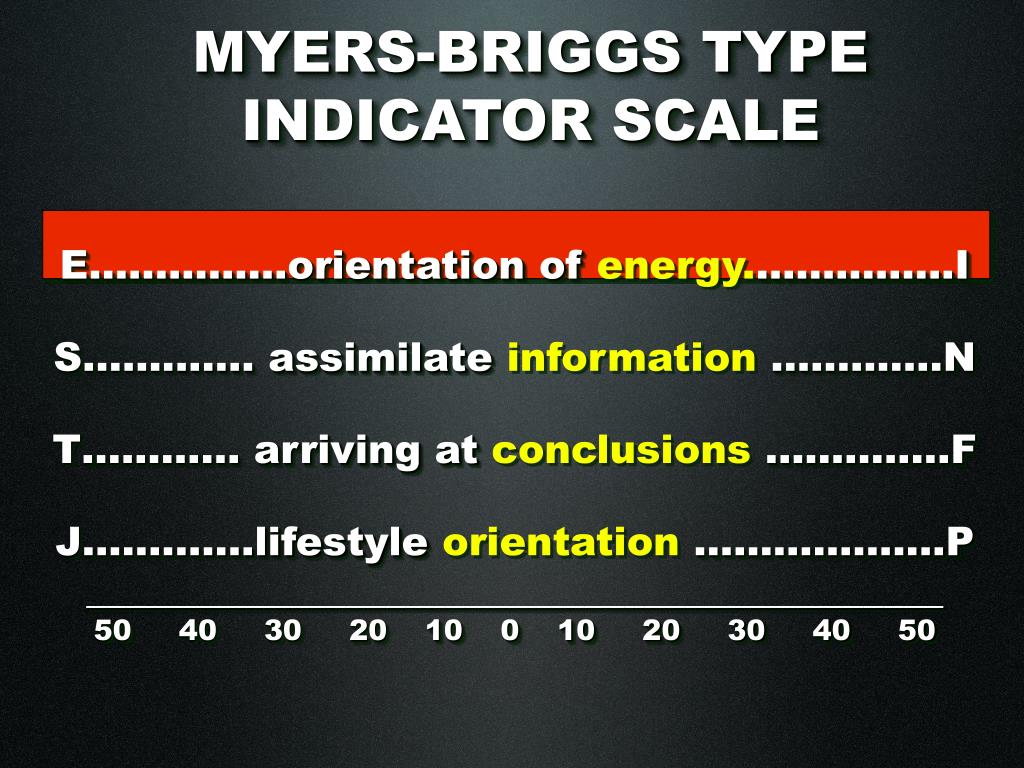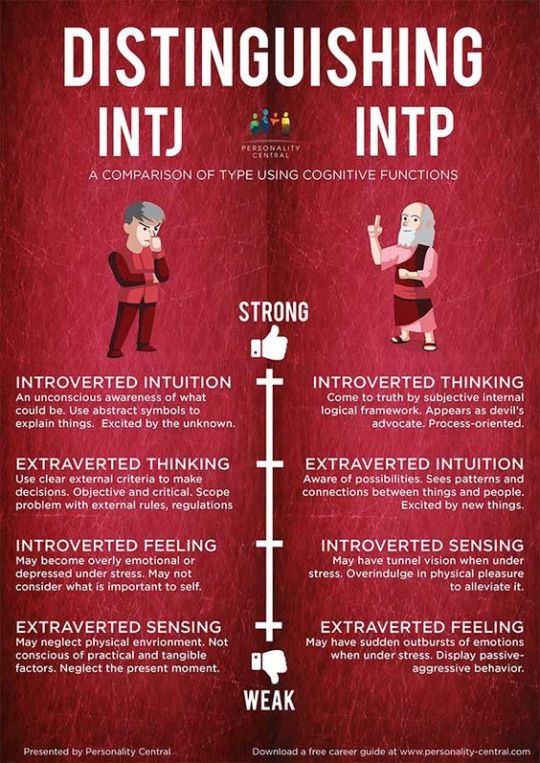

The Psychological Type view of Introversion, for example, as an equally positive intrinsic quality as Extraversion is urged as less crude and more authentic. The MBTI consists of nearly 100 self-report items that each contain two statements the respondent chooses which item best describes him or her. Specifically the Psychological Type community should abandon its insistence that every individual is constitutionally either, for example, an Extravert or an Introvert and advocates of the Trait approach should abandon the morally evaluative stance that, for example, Extraversion is a desirable quality which introverts sadly lack in adequate measure. The MyersBriggs Type Indicator (MBTI) The MBTI ( Myers & McCaulley, 1985) is loosely based on a theory of psychological types developed by the Swiss psychologist Carl Jung. An evaluation of these differences suggests that a harmonization would be achieved if each side of the argument could relinquish one of its cherished theoretical underpinnings. The differences are principally in the different theoretical frameworks of the Type and Trait approaches. The Type and Trait approaches both conclude that there are just four principal and independent components of the normal personality, and are in close agreement in identifying these four components. The Myers-Briggs Type Indicator ® (MBTI ®) assessment is one of the world’s most popular personality toolsbecause it works. The Myers-Briggs Type Indicator (MBTI) was developed by Isabel Myers and Katherine Briggs based on the teachings of Carl Jung. The grounds of this hostility are here examined, revealing a remarkable convergence between the conceptual frameworks of MBTI ® and its more orthodox counterparts in personality psychology, as well as several significant differences.

This continuing and growing popularity is surprising in view of the disdain with which MBTI ® has long been regarded by the professional psychology community. Its Psychological Type approach is found to be a valuable aid to understanding self and others and thus to enhancing effective team-working. Start your free 14-day TalentLyft trial.The Myers-Briggs Type Indicator (MBTI ®) is widely used as a staff-development tool in the business and voluntary sectors.

This introversion/extroversion distinction is key in MBTI results.Ĭompanies use MBTI so they can see how to better support employees, if the new employees will fit into the existing team and whether people are suitable for leadership roles.ĭo you use a modern recruitment software? If not, you're missing out. MBTI states that there are two main human functions: judging function (thinking –logical or feeling-empathetic) and perceiving function (sensing –concrete or intuition-abstract).īoth functions are expressed by an individual in either introversion or extroversion form. With more than 70 years of science-based, research-based insight, the MBTI assessment is a robust tool for self-awareness and improvement. Used by more than 88 percent of Fortune 500 companies in 115 countries, and available in 29 languages, it has become the go-to framework for people development globally. The personality is divided into four dichotomies, with 16 personality types possible. The Myers-Briggs Type Indicator (MBTI ) assessment is one of the world’s most popular personality toolsbecause it works. With it, we aim to inspire the world, one world at a time. Learn about personality type using Myers Briggs Type Indicator (MBTI Learn how we make decisions, take in information, and orientate ourselves in the world and SlideShare uses cookies to improve functionality and performance, and to provide you with relevant advertising. The Myers-Briggs Type Indicator (MBTI) assessment is a psychometric questionnaire designed to measure psychological preferences in how people perceive the world and make decisions.:1 These preferences were extrapolated from the typological theories proposed by Carl Gustav Jung and first published in his 1921 book Psychological Types (English edition, 1923). The Myers-Briggs Type Indicator helps support your personal well-being and professional performance goals by providing you with a deeper understanding of what. Myers-Briggs type indicator refers to well-known psychological test designed to distinguish personality types by measuring people’s psychological preferences. The MBTI ® is a tool to enrich people’s understanding of themselves and others. The Jung personality test measures your preferences for dealing with and relating to people, processing information, making decisions and organizing your life. Myers-Briggs type indicator definition (MBTI) The Myers-Briggs personality test, also known as Myers-Briggs Type Indicator (MBTI), is one of the most popular assessments used in the business world. Myers-Briggs type indicator refers to well-known psychological test designed to distinguish personality types by measuring people’s psychological preferences. The Myers-Briggs Type Indicator (MBTI) is an introspective, self report evaluation that identifies a person’s personality type and psychological preferences. Resources / Glossaries / Terms & Definitions / Myers-Briggs Type Indicator (MBTI)


 0 kommentar(er)
0 kommentar(er)
